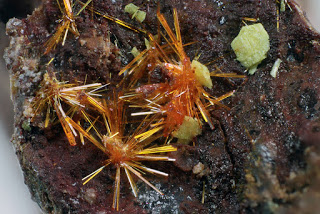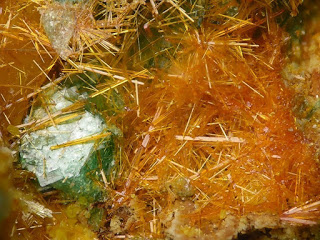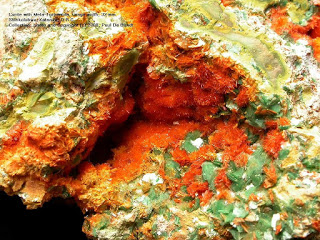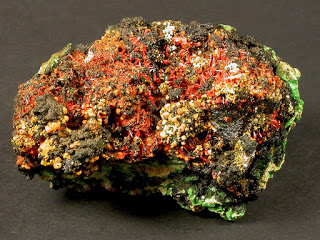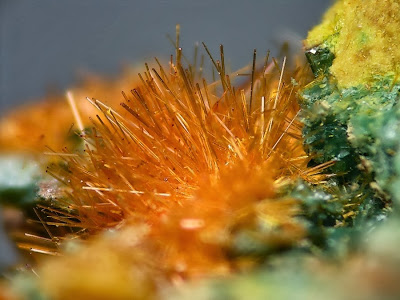
Chemical Formula: Pb3(UO2)8O8(OH)6 · 3H2O
Locality: Shinkolobwe Mine (Kasolo Mine), Shinkolobwe, Katanga Copper Crescent, Katanga (Shaba), Democratic Republic of Congo (Zaïre)
Name Origin: Named for Pierre Curie (1859-1906) and Marie Curie-Sklodowska (1867 – 1934), French research team of radioactive minerals. Discoverd the element radium.
Curite is a lead uranium oxide mineral with formula: Pb3(UO2)8O8(OH)6 · 3H2O. It is named after the physicists Marie and Pierre Curie, who are both known for their work on radioactivity. The type locality is the Shinkolobwe Mine.
Physical Properties of Curite
Cleavage: {100} Good, {110} Good
Color: Yellow, Reddish orange, Brownish yellow.
Density: 7.19
Diaphaneity: Transparent to Translucent
Fracture: Brittle – Generally displayed by glasses and most non-metallic minerals.
Hardness: 4-5 – Fluorite-Apatite
Luster: Adamantine
Streak: orange
Photo
